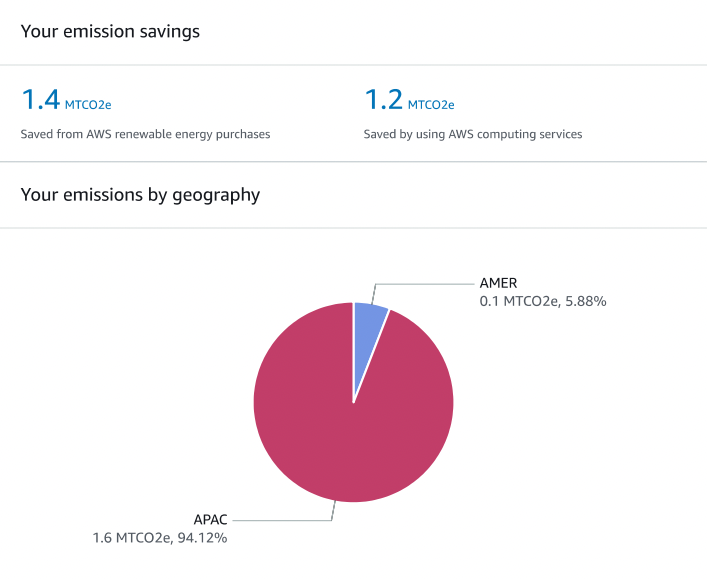Start with measurement
Like most things – we manage what we measure. So before we start to solve for our future production we should understand where we are today. By starting with the AWS customer carbon footprint tool located in the billing tool you can better understand the carbon generated within Scope 1 and Scope 2 of the United States EPA reporting framework. The inclusions align with the Australian Clean Energy Regulator emissions scopes, and so is useful for aligning on a baseline of carbon produced through your cloud usage. It’s worth noting that the tool has an approximate 3 month lead time on usage as part of the calculation methods, which you can find described in the guidance.
For more information on Scope 1 and Scope 2 emission inclusions see Greenhouse gases and energy (cleanenergyregulator.gov.au).
Focus on impact
Once you measure, how do you manage – and ideally reduce your impact? In 2021, AWS added a new pillar to its Well Architected Review framework. While earlier announcements on renewable energy projects, and the progress AWS have made towards their 100% renewable goals demonstrate their commitment to the sustainability elements of the shared responsibility model, this pillar allows us all to play a part in improving the way we design solutions to minimise the impact we have on the world around us.
Building down from your organisational sustainability objectives, the Sustainability pillar in the well architected review provides guidance around 6 key practice areas:
- Region selection
- User behaviour patterns
- Software and architecture patterns
- Data patterns
- Hardware patterns
- Development and deployment patterns
Each practice area provides a deep dive you can use to help create a more sustainable approach to cloud consumption. While some guidance is within immediate reach – e.g. apply lifecycle policies to data, and avoid storing data that can be recreated, some are more challenging to achieve – for example, where the underlying energy infrastructure isn’t in place to enable workloads to run on renewable energy.
As always it’s a game of trade offs. Do you move workloads closer to your users, and thus reduce the consumption of power used to drive your data over the wire or do you move them further away, but achieve location in a renewably powered region? Ultimately your sustainability goals, organisational objectives, and user needs will provide the best decision making framework for the workload specific goals you set, and ultimately which parts of the guidance you take action on.
Questions you should be asking
Given the responsibility for sustainability in the cloud resides with us, as creators of the digital services built within the cloud we should be including in our thinking how the likely utilisation rates of the solutions we design impact our overall sustainability. For each component service:
- How are we bringing this workload closer to the user?
- How are we automating the provisioning – and more importantly the de-provisioning of resources as they are required?
- How are we understanding and applying appropriate lifecycle management to our data, or better yet – not storing it all if it is able to be re-created?
- How are we continuing to iterate the underlying services to ensure we’re maximising the actual in cloud utilisation rates through managed services?
These are the kinds of design principles that – when embedded early in the software design and development process, can drive reduction in your carbon footprint while using cloud.
So – how is your organisation driving toward more sustainable digital services?








